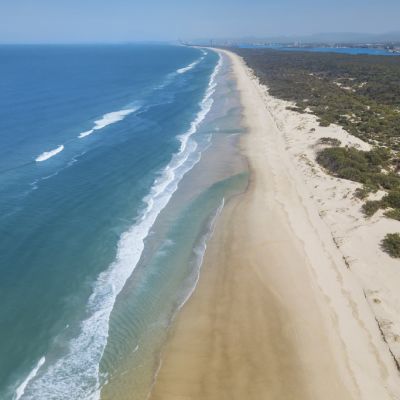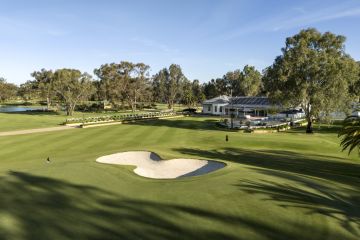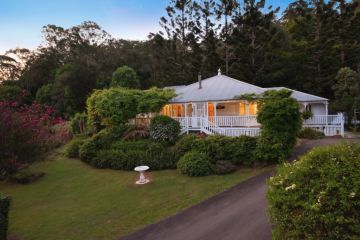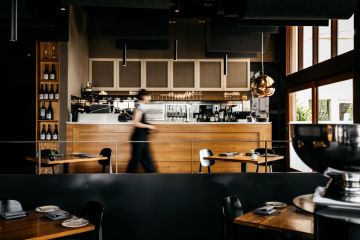Stunning holiday hotspots where house prices have doubled in five years

Property prices in a string of popular coastal and country towns have more than doubled over the past five years, new data shows, pushed sky-high by the pandemic sea-change trend.
But these huge price rises are not likely to happen so fast again, as the unique market conditions caused by COVID-19 are unlikely to be repeated, experts say.

The biggest jump in house prices over the past five years was in Sunshine Beach, in Noosa, up by 209.5 per cent to a median of $3.25 million.
House prices also soared in nearby Sunrise Beach, by 152.9 per cent to $1.77 million, and Noosa Heads, up 152.1 per cent to $2,212,500.
In NSW, the biggest price jump was in Jindabyne, in the Snowy Mountains, where unit prices rose 181.7 per cent to a median $800,000.
It was followed by lockdown escapes on the NSW north coast, including Kingscliff, up by 135.7 per cent to a median house price of $1.85 million, and Casuarina, up 133 per cent to $2.05 million.
In Victoria, house prices in Gippsland’s Venus Bay rocketed by 158.6 per cent to a comparatively affordable $675,000 median. The popular tree-change town of Bright jumped by 146.4 per cent to $1,195,000 and Anglesea, on the Surf Coast, soared by 140.4 per cent to $1,725,000.
Domain chief of research and economics Dr Nicola Powell said such extreme price rises had been fuelled by COVID, as buyers rushed to escape cities in multiple lockdowns in 2020 and 2021.
Record-low interest rates had encouraged buyers to find their ultimate lifestyle home, though this had started to change as the Reserve Bank lifted rates this year.
“I do think that the COVID boom is the unicorn of property cycles – it really happened so quickly,” Powell said. “I don’t think we’ll ever see this again, especially as prices moved upwards with such speed.”
Agents in these popular coastal and country areas said the market had slowed since the rush of 2020 and 2021, but that properties were still selling.
Richardson and Wrench Noosa selling agent Rick Daniel said interstate buyers looking to escape the COVID-19 pandemic rushed to the Sunshine Coast to buy either a holiday home, or a permanent one.
Wealthy buyers moving from Sydney and Melbourne landed in Sunshine Beach, while families were more likely to have made their home at Sunrise Beach, he said.
“It was sort of like COVID put the spotlight on Noosa in particular,” he said. “A lot of people who were interstate and holidayed here thought if this ever happens again, we want to be out of Victoria [or NSW].”
This year, the market had slowed from its run of quick sales, though homes and units were still selling as investors returned to the market.

In Jindabyne, Forbes Stynes Real Estate’s Toni Wheelhouse agreed that one of the biggest drivers for sales in the past five years had been city dwellers’ desire to move away during COVID.
“It’s relatively close to Sydney and Canberra, so we had buyers from there. It was amazing,” Wheelhouse said. “We all thought it was going to go the other way [with property prices falling] but they just skyrocketed.”
Wheelhouse said the market had changed since interest rates started to rise in May, and properties had been taking longer to sell.
“It’s reflective of what’s happening across NSW,” she said.
Seaside suburbs have been popular in Victoria, and the popularity of Anglesea reflected its more affordable house prices compared to the Mornington Peninsula, McCartney Real Estate director Tim Carson said.
A typical house in Anglesea sold for $1,725,000 over the past year, compared to Sorrento’s median house price of $2.51 million. The top end of the Sorrento market reaches as high as $30 million.
Buyers from Melbourne and elsewhere in Victoria snapped up properties during the lockdowns, along with Sydney-based buyers originally from the area and returning home.
“Beachfront homes are still selling quite well, but there are some longer days on market,” he said.
Carson was confident that prices would remain buoyant despite the downturn, as interest rates rise.
“The affordability of this market, compared to the Mornington Peninsula, means it really still is undervalued,” he said.
We recommend
We thought you might like
States
Capital Cities
Capital Cities - Rentals
Popular Areas
Allhomes
More










